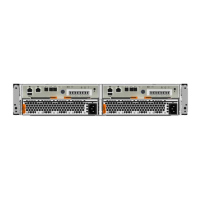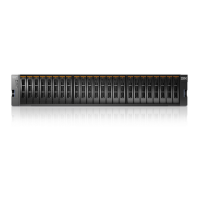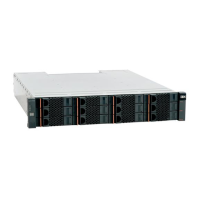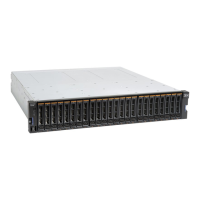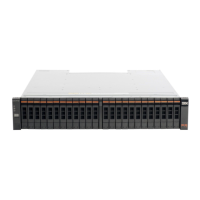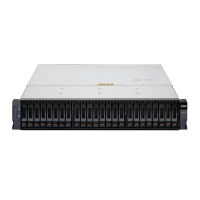468 Implementing the IBM Storwize V5000 Gen2 with IBM Spectrum Virtualize V8.1
A volume that is created without the autoexpand feature, and therefore has a zero
contingency capacity, goes offline when the real capacity is used and the volume
must expand.
Autoexpand mode does not cause real capacity to grow much beyond the virtual capacity.
The real capacity can be manually expanded to more than the maximum that is required by
the current virtual capacity and the contingency capacity is recalculated.
A thin-provisioned volume can be converted non-disruptively to a fully allocated volume, or
vice versa, by using the volume mirroring function. For example, you can add a
thin-provisioned copy to a fully allocated primary volume, and then remove the fully allocated
copy from the volume after they are synchronized.
The fully allocated to thin-provisioned migration procedure uses a zero-detection algorithm,
so that grains that contain all zeros do not cause any real capacity to be used. Usually, IBM
Storwize V5000 Gen2 is supposed to detect zeros on the volume, so you must use software
on the host side to write zeros to all unused space on the disk or file system.
Space allocation
When a thin-provisioned volume is created, a small amount of the real capacity is used for
initial metadata. Write I/Os to the grains of the thin volume (that were not previously written to)
cause grains of the real capacity to be used to store metadata and user data. Write I/Os to the
grains (that were previously written to) update the grain where data was previously written.
Smaller granularities can save more space, but they have larger directories. When you use
thin-provisioning with FlashCopy, specify the same grain size for the thin-provisioned volume
and FlashCopy.
Warning threshold: Enable the warning threshold, by using email or a Simple Network
Management Protocol (SNMP) trap, when you work with thin-provisioned volumes. You
can enable the warning threshold on the volume, and on the storage pool side, especially
when you do not use the autoexpand mode. Otherwise, the thin volume goes offline if it
runs out of space.
Grain definition: The grain is defined when the volume is created, and can be 32 KiB,
64 KiB, 128 KiB, or 256 KiB.

